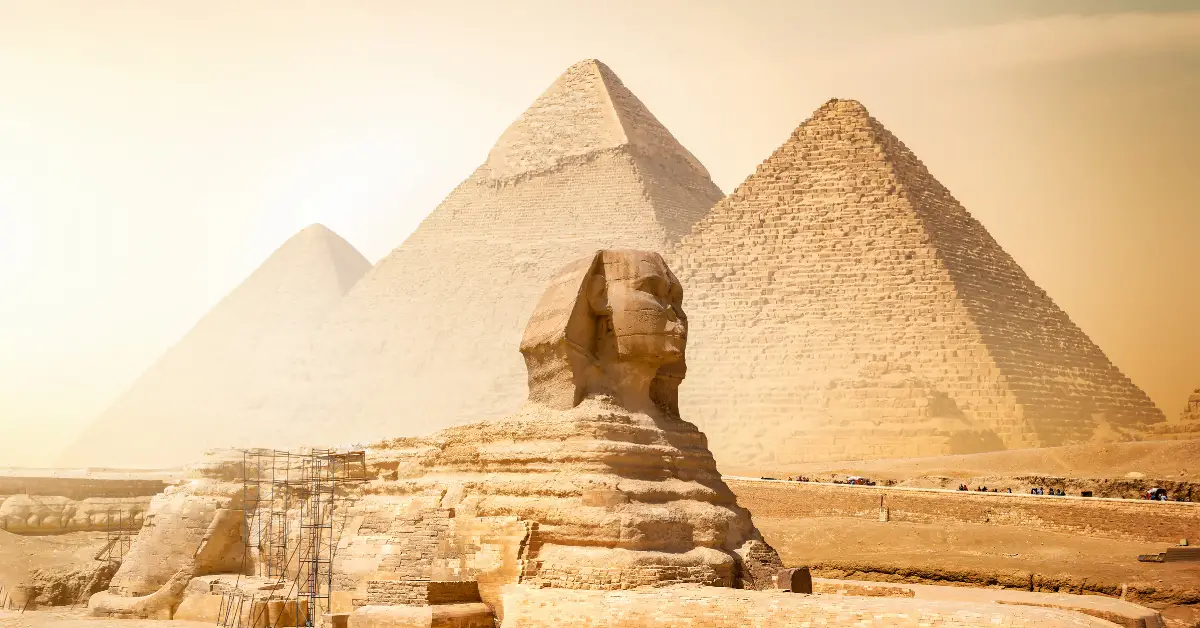Introduction
As one of the world’s most iconic and recognizable monuments, the Great Sphinx of Giza has captivated the imagination of travelers, scholars, and historians for millennia. This colossal limestone statue, featuring the body of a lion and the head of a pharaoh, has stood guard over the Giza Plateau for thousands of years, leaving us with enigmatic questions about its origins, purpose, and the civilization that created it. In this article, we delve into the mysteries surrounding the Great Sphinx, exploring its history, significance, and the ongoing quest to uncover its secrets.
The History and Mystery of the Great Sphinx
The Great Sphinx of Giza, located on the west bank of the Nile River and facing east, is believed to have been constructed during the reign of Pharaoh Khafre in the Fourth Dynasty (circa 2580-2560 BCE). The statue, carved from a single block of limestone, measures 240 feet in length and stands 66 feet high. Despite its impressive size and prominent location, the Sphinx’s origins and purpose remain shrouded in mystery, as there are no inscriptions or records to definitively link it to Khafre or any other historical figure.
The Significance of the Great Sphinx
The Great Sphinx holds a unique and enduring place in Egypt’s rich cultural and spiritual heritage. As a symbol of strength, wisdom, and divine protection, the Sphinx has been interpreted as a guardian of the Giza necropolis, watching over the sacred tombs of the pharaohs. The fusion of a lion’s body with a human head signifies the union of earthly strength and divine wisdom, reflecting the ancient Egyptian belief in the pharaoh as both a powerful ruler and a conduit to the gods.
Unraveling the Mysteries of the Great Sphinx
Throughout history, the Great Sphinx has been the subject of countless theories, speculations, and debates, as scholars and researchers attempt to uncover its secrets. Some of the most intriguing aspects of the Sphinx include:
- The Age of the Sphinx: The conventional view is that the Sphinx was constructed during the reign of Pharaoh Khafre; however, some researchers have proposed that the monument may be much older, pointing to evidence of water erosion on the statue’s body, which suggests it could have been built during a time when the region experienced more rainfall.
- The Missing Nose: The Sphinx’s missing nose has long been a subject of curiosity and speculation. While some believe that it was destroyed by natural erosion, others argue that it was intentionally removed by vandals or invading forces.
- The Hall of Records: One of the most enduring and controversial theories surrounding the Sphinx is the existence of a hidden chamber known as the Hall of Records, which is said to contain ancient knowledge and historical records. While no conclusive evidence has been found to support this theory, it continues to fascinate researchers and fuel their quest to uncover the Sphinx’s mysteries.
The Great Sphinx in the Modern Era
Today, the Great Sphinx stands as a potent symbol of Egypt’s ancient past and its enduring allure for travelers and scholars alike. As a UNESCO World Heritage Site, the Sphinx and the Giza Plateau are protected and preserved for future generations to explore and appreciate. The ongoing efforts to conserve and study this enigmatic monument ensure that it will continue to captivate our imagination and inspire our quest for knowledge about the mysteries of the ancient world.
Conclusion
The Great Sphinx of Giza is a timeless and enigmatic monument that has captivated the hearts and minds of countless generations. As we continue to explore its history, significance, and the mysteries that surround it, we gain a deeper appreciation for the ingenuity and creativity of the ancient Egyptian civilization that created this awe-inspiring testament to their cultural and spiritual legacy. Whether you are a historian, archaeologist, or simply a curious traveler, the Great Sphinx offers a unique and unforgettable journey into the heart of Egypt’s ancient past and its enduring fascination for people around the world.


